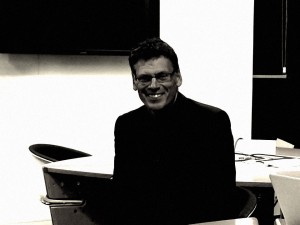THE CARETAKER
What happens when all that is left is the quietness? No pounding of gavels or black robes and unwashed wigs harassing the hallways? Of murderers on trial, of justice-seekers and curious peepers? No one really knows, but the old man who cleans, cleans, cleans.
Length: 3 mins 37 seconds
SYNOPSIS
In the eyes of the Caretaker, the great Magistrates’ Court is nothing but a place wherein he succumbs to his loneliness.
PURPOSE
The project is my first foray in the Experimental Film genre. The piece is a poetic, abstract reverie of what the place is to the invisible character of the Caretaker. I wanted to give meaning to the space and the place occupied by the building itself (the walls, halls, doorways, rooms) and how the Caretaker gives meaning to the place that has become mundane to him for he is always never seen; in the silences, when the doors are locked and no other soul is about.
The short film is to be incongruous, hence, it being experimental in its genre. There is no narrative to follow, but the clips, both found-footage and recorded, are deliberately placed to allow the viewers to freely interpret what is being told.
CREW
Produced, edited and directed by me.
Thank you to the Ghosts of RMIT team on the day of the shoot for helping with camera problems (there were heaps).
THE PROCESS
The making of this short film definitely came with its problems. My first dilemma was where exactly to place the captured clips and videos in a sequence that will encapsulate the concept I have of putting meanings to the spaces through the eyes of the Caretaker. This was my biggest challenge in the production of this film. I went about in finding a resolution to this by going through some of my video inspirations with an addition of Ballet Mecaniqué by Fernand Leger, who gave me the idea of repetition as a motif to represent the distress the Caretaker is experiencing in his bouts of imagination due to his lonely job.
The production began quite smoothly. I followed the work timeline I prescribed to myself stringently albeit with the surfacing of aforementioned dilemma of the delivery process. Nevertheless, the filming went really smoothly. On the day, I took as many shots as possible of the interior of the Magistrates’ Court but what I found that inevitably helped in my final storyboarding and editing process was the visit to what is known as “The Plant Room.” It was an old, decrepit storage room located in the far recesses of the main court behind two supposedly locked doors and an eerie gaol cell to fit the bill. It was an atrocious sight and Jackie and I would not have dared to enter the room if not for Rachel (thank you, kindly) and a fellow student, Linh, who ventured on, turning the lights along the way.
The room was forlorn, dusty and a treasure trove for all things old-fashioned. But what got me the most was the single chair that sat in view of the open door. It was curious, it was lonely, and I knew then and there that the Caretaker, his character, his soul, whoever he may have been in the past, was an incredibly lonely character.
This epiphany drove me to evaluate my draft storyboard, which then also allowed me to appropriate the concepts I learned in class to the differences between space and place with place as a space that has meaning. In my video, I applied the techniques of opacity and scaling to the very extent of my skill in such. I’m thankful to our guest lecturer, Jeremy Bowtell for the basic tutorial for Adobe Premiere Pro, but mostly, I thank this class for allowing me to test my skills, add on to, and really push myself to my editing limits (and that is an incredibly short limit, f.y.i.).
FINAL FILM
The final outcome, eventually, after much harassment from a very neutral-looking editing suite, turned out as hoped and planned and even more. The chosen music, ghostly and haunted with the appropriate title of “At the end, everyone dies” by the ingenious Kai Engel (I bow to you for the royalty-free) was inspired by Abigail Belfrage who made certain that I think about what fits well with the overall thematic I had. The colours are minute black-and-white, easier to manipulate to encompass the ghostly, almost macabre message I had in mind with the Caretaker’s loneliness. It also worked really well with the found-footages.
An abundance of improvements include mastering Adobe Premiere Pro as the go-to editing suite. Finding out how plug-ins works, particularly subtitles, is a must too. I was to include subtitles in this piece as opposed to narration (in the final film, I utilised titles as subtitles), but Premiere’s built-in closed captioning were stiff and incredibly frustrating to handle. I decidedly gave up, but I plan on experimenting with that medium in the near future. I uses titles and “subtitles”, albeit vague, to give the piece texture as well. And the only colour is during the “poisons” scene…appropriately. And before I forget, incorporating images would be quite helpful too.
The class has taught me to appreciate spaces and places in a whole different way. Through The Caretaker, I was able to give meaning to places as opposed to simply admiring its architecture and the echoes of its past. I was able to wander through the halls and assess the cracks and fissures, the importance of the little nooks and crannies and what they are used for and most importantly, the people who give meaning to the space, particularly, the caretaker in the Old Magistrates’ Court in this case.
